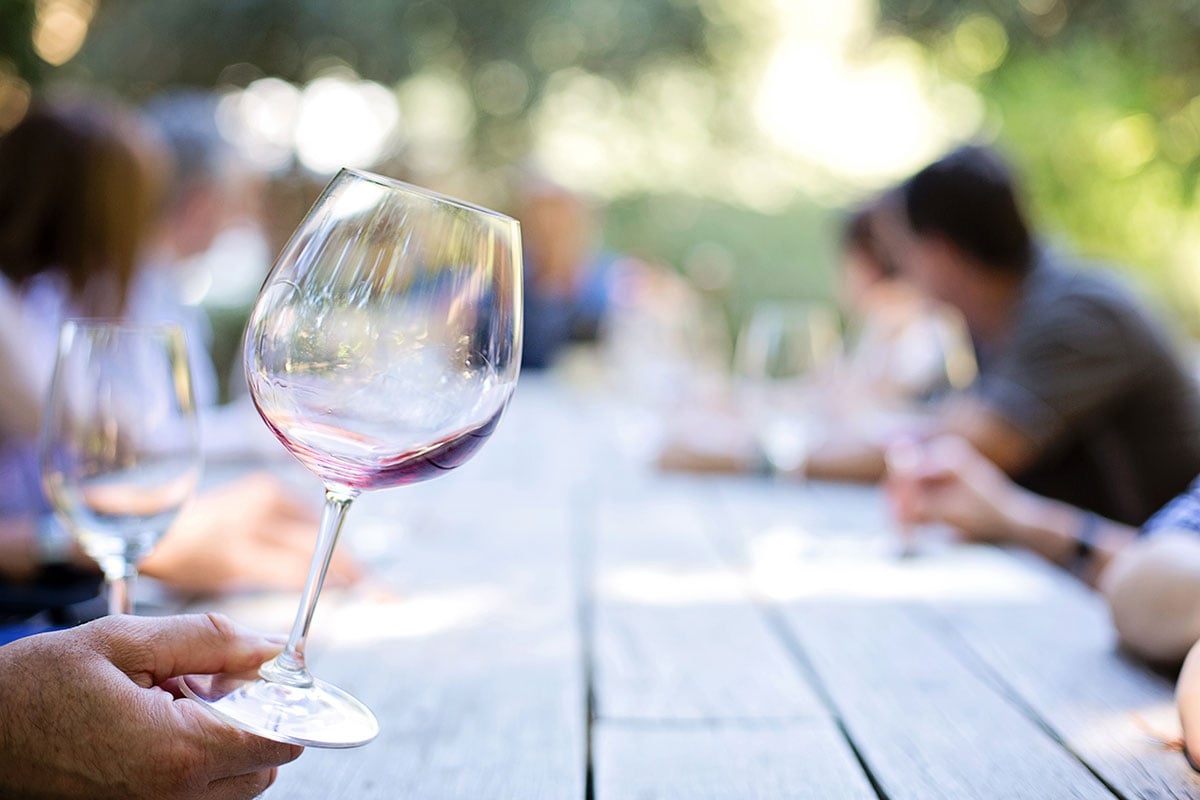

If you’ve ever celebrated New Year’s Eve at a party that includes children under the age of 21, or people that would like to refrain from drinking alcohol, then you’ve probably experienced what you would consider non-alcoholic wine. In most cases like this you’ll typically find people serving sparkling grape juice or something similar as a substitute for champagne during the midnight toast, but is grape juice really considered non-alcoholic wine?
Beverages like sparkling grape juice are not the same as non-alcoholic wine. They aren’t made the same, they don’t taste the same, and non-alcoholic wine is not suitable for children or those under 21 although they are considered “non-alcoholic”.
Sparkling grape juice is just that, grape juice with bubbles. There’s never been any alcohol present during the process of making it, so there is zero presence of alcohol. Sparkling grape juice is made from white grape juice that has been fermented longer as to create the carbonation in the drink.
The only time you might find alcohol in a sparkling grape juice is if you purchase it in Europe, as European-made bottles may contain a small amount of alcohol whereas in the United States there is absolutely no alcohol.
So, if sparkling grape juice isn’t considered non-alcoholic wine, what is non-alcoholic wine?
What is Non-Alcoholic Wine?
Non-alcoholic, or alcohol free, wine is exactly that, wine that contains little to no alcohol. It has similar flavor profiles, varieties, and substance, just without the alcohol.
Just like non-alcoholic beer though, alcohol free wine may still contain small amounts of alcohol. Because of this, if you’re trying to avoid alcohol completely, you may want to also avoid non-alcoholic wine. However, if you’re trying to cut back your alcohol consumption because of health reasons or pregnancy, non-alcoholic wine can be a suitable alternative in moderation.
How is Non-Alcoholic Wine Made?
As we mentioned above, sparkling grape juice is not true non-alcoholic wine and the process for making the two drinks is different.
Sparkling grape juice never goes through the vinification process and never has any yeast added to it to help create the alcohol that we find in traditional wine and non-alcoholic wine.
Non-alcoholic wine follows the exact same steps as traditional wine with alcohol, but during the last part of the process the alcohol is removed from the wine.
The most common way to remove alcohol from wine is through a process known as vacuum distillation.
Vacuum distillation uses heat to evaporate most of the alcohol in the wine leaving only trace amounts of alcohol. By maintaining the highest heat possible without getting it to the point where it will burn or boil the wine, the alcohol is removed thereby leaving all the original wine flavor intact.
By using this process of removing the alcohol, the wine makers can ensure that the final product has the least amount of alcohol possible while still maintaining the intended flavor profile of the original wine.
What Does Non-Alcoholic Wine Taste Like?
The good news is that most non-alcoholic wine today is designed to taste the same as traditional wine. Since the alcohol-free wine goes through the exact same process as traditional wine containing alcohol, just with the alcohol removed during the last phase of the process, you should be left with a very similar tasting wine.
Pulling out all the alcohol is going to alter the taste slightly, but overall, the flavor profile should be the same.
If you’re trying to completely avoid alcohol for one reason or another, non-alcoholic wine will still contain a small amount of alcohol. It’s not enough to get you inebriated, but it is there.
Non-alcoholic wine is a great way to enjoy the wine taste you love without the worry of what alcohol may do to your body.